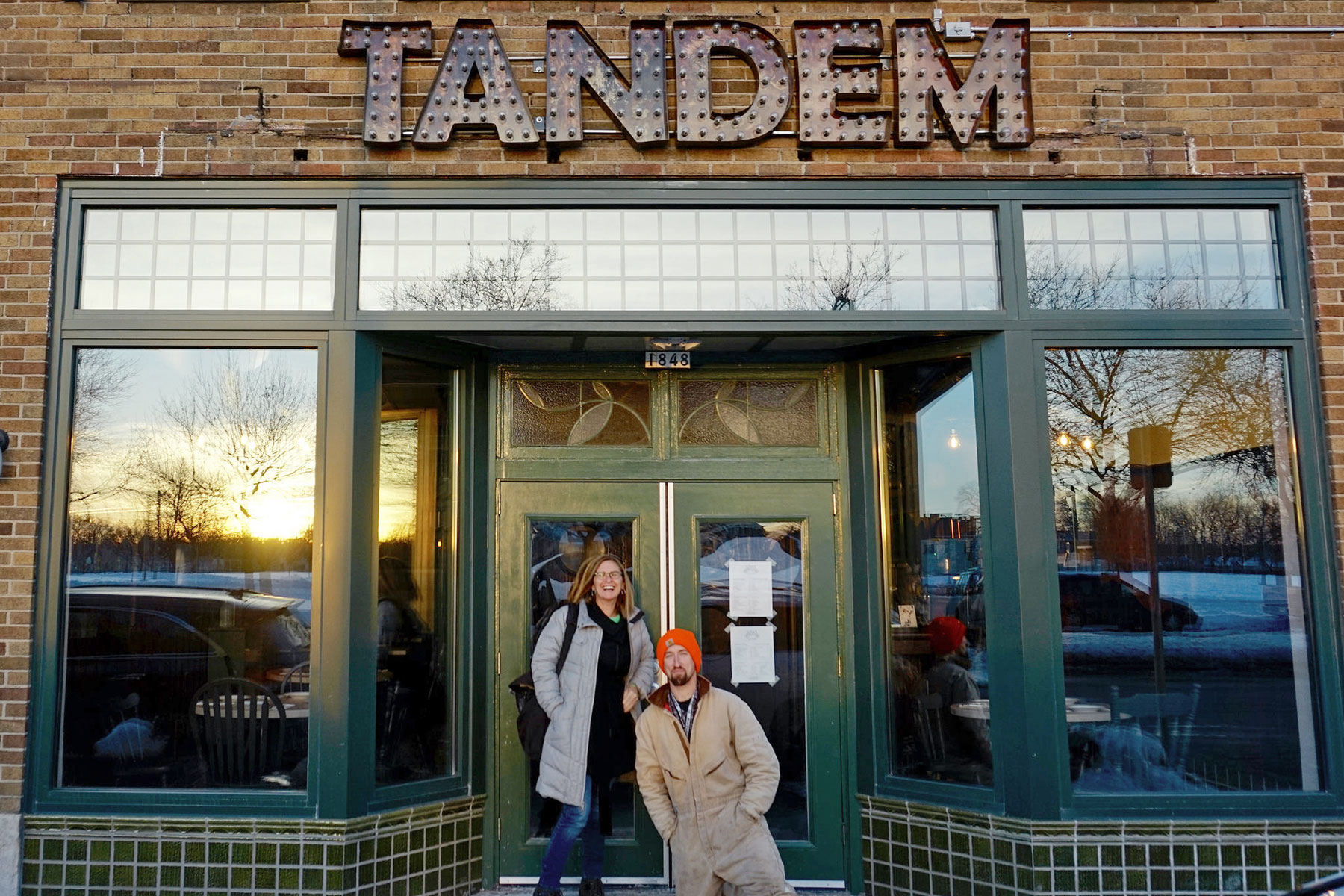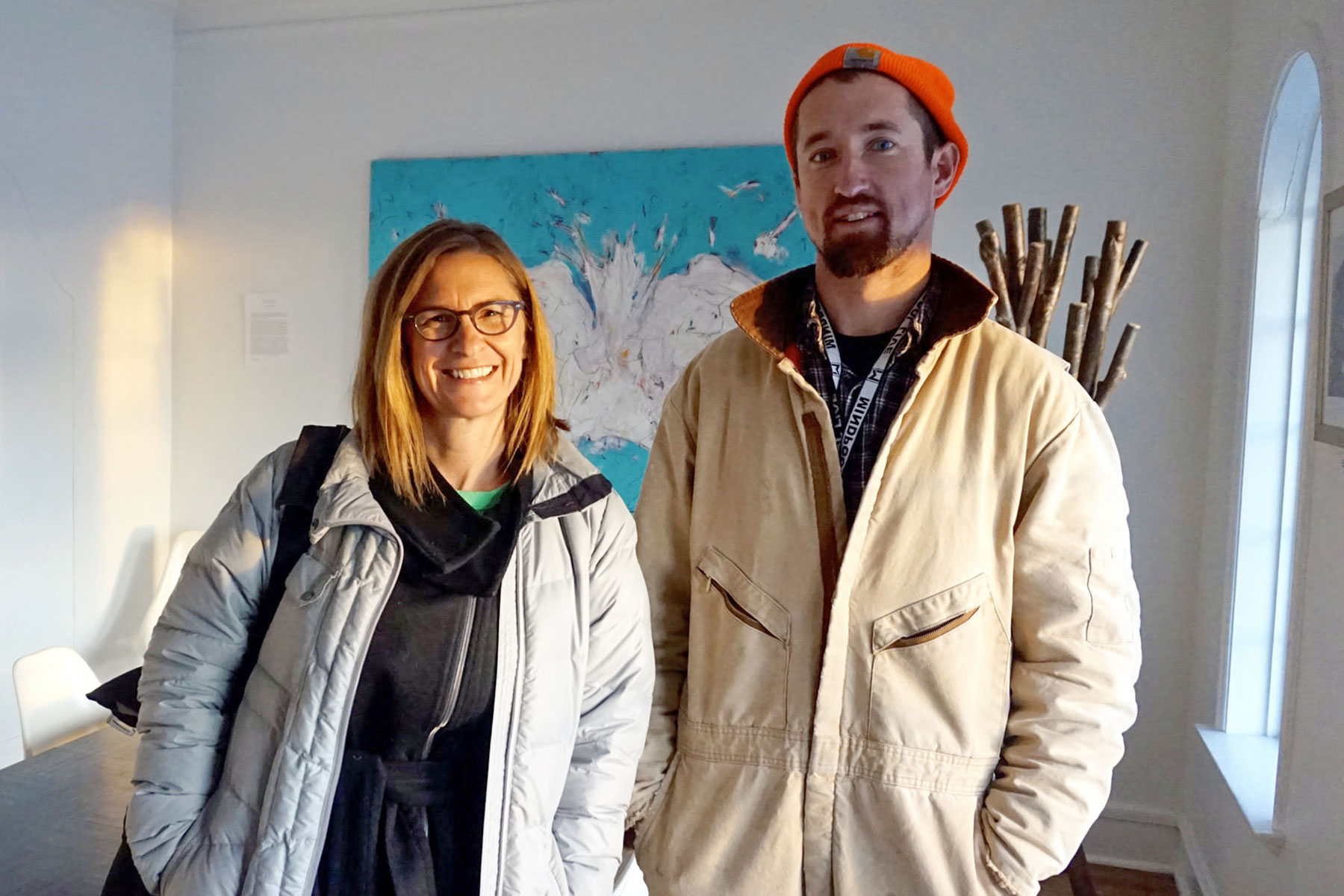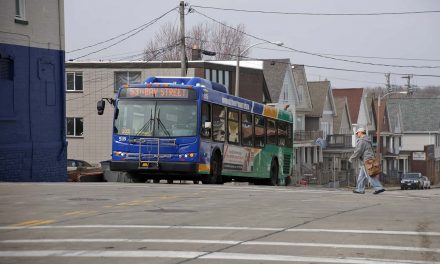
A new development model makes Lindsay Heights residents co-owners and co-developers of a renovated, job-creating property that houses small businesses and a sit-down restaurant.
Ashley Lee, a special assistant to the superintendent of Milwaukee Public Schools and Lindsay Heights resident, had never invested in real estate before, but her belief in community-driven development led her to join 42 neighbors in becoming a co-owner of the recently renovated Historic Walter Schmidt Tavern.
The project, at 1848 W. Fond du Lac Ave., pioneers a new model of development in an historically disinvested Milwaukee neighborhood. Through community partnerships and crowd funding, developers overcame traditional financing barriers to turn an abandoned 1893 building into the sit-down restaurant Tandem and office space for seven small businesses.
“We can build what we need as a community if we unite and use our resources wisely,” Lee said. “It’s important for me to have a literal stake in the ground for how we improve our neighborhoods, and this is a way I can do that.”
Real estate developer Juli Kaufman of Fixed Development partnered with Lindsay Heights resident Jeremy Davis to spearhead the project. Davis is the lead manager for Blue Skies Landscape at Walnut Way Conservation Corp. and has strong relationships with his neighbors.
“I’ve known for a while that Jeremy was someone who approached community in a really special way,” Lee said. “I knew it would be done in a way that was respectful.”
Partnership
Gaining neighbors’ trust was essential to Kaufman. She works under a quadruple bottom line, prioritizing economic stability, environmental stewardship, social equity and cultural continuity.
“I came into real estate development because I was seeing an absence of the kind of development I wanted to see in my neighborhoods,” Kaufman said.
She said she has seen developments fail or achieve undesired results when residents’ voices weren’t considered.
“She [Julie] has the resources, she has the know-how, she has people who are willing to invest in something she’s doing, and she can … find a partner like Jeremy who knows the community and bridge that divide,” said Caitlin Cullen, the head chef at Tandem.
Community members directly financed the development through a crowd fund model that Kaufman referred to as “do-it-yourself real estate development.”
After several investors got the project off the ground, Kaufman and Davis found community members who could invest a minimum of $1,000. Kaufman said she had used a similar model before with much higher minimum investment levels.
“Fundamental to everything I believe is that decisions should be made by the people who are impacted by them,” Lee said. “The process was inclusive and transparent.”
Kaufman and Davis explained that the model is a viable, innovative alternative to traditional financing approaches, which would not have worked for this project and are barriers to development in disinvested neighborhoods.
Similar projects are considered too risky for traditional banks, too small for traditional venture funds, too private to be completely foundation-funded, and too broad in scope to be completely publicly funded.
“The systems that currently exist exclude many everyday, often high-risk start-up job-creating entrepreneurs in low-income communities who seek to revitalize their own main streets but lack access to capital,” Kaufman said.
Kaufman and Davis said that investors are on track to receive 6 percent return on investment, since the space is fully leased.
“In addition to a strong financial return…you get an investment in Milwaukee, and hopefully in things that you care about,” Kaufman said.
Davis noted that investors are directly contributing to job creation in their own city while receiving the same return they would on a foreign investment. “The economic effects of that are huge,” he said, “because then those dollars are recycled in our own community.”
Reinvigorating the private sector
The Walter Schmidt developers hired a contractor from the 53206 ZIP code who brought on local subcontractors who are nearly all people of color, according to Kaufman. All the employees of the small businesses renting office space are people of color and/or women.
Tandem hired people with ties to the neighborhood and is providing on-the-job training. “I yelled ‘jobs’ in a neighborhood with high unemployment and literally fielded phone calls nonstop,” she said.
“Everyone is proud of themselves and proud of each other here,” Cullen said of the Tandem staff.
Nancy Ketchum, a strategic communications consultant, located her business, Bottlewood Communications, in the development. She praised the beautiful conference room, proximity to downtown, affordability, network of other small businesses and the connection she feels to her community.
“I’m dedicated to making a life within the city of Milwaukee and doing what I can to make the city thrive,” Ketchum said.
According to Kaufman, half of the commercial properties in the area are boarded up. “Until you move the private sector back in, you’re always going to have economic dysfunction,” she said.
Davis said he felt the benefit of Tandem on a snowy night when he couldn’t go grocery shopping. “I just walked three blocks and had a really quality dining experience in my own neighborhood,” he said.
Lee commented that the development adds dignity to her neighborhood and its residents.
“When you see money that is coming from a community back into a community, I think there is a different way of looking at the people there,” Lee said.
“People are sitting down and eating meals in our community and talking to our neighbors,” she added. “Some of those intangible pieces are the most powerful.”
Kaufman said she hopes the development can catalyze development initiatives in Lindsay Heights and other historically disinvested neighborhoods.
Tim Syth, working to develop a property on the South Side, is using similar principles of community partnership and crowd funding. He said he considers Kaufman a mentor and admires how she “thinks of real estate development and social development as one practice.”
Kaufman said that despite the hard work, the Walter Schmidt redevelopment model is scalable and replicable.
“There are a lot of pieces to our financial package that made this work,” Kaufman said, “but the core of it is community ownership.”
“It is an example of what’s possible, a labor of love and collaboration,” Lee said.















